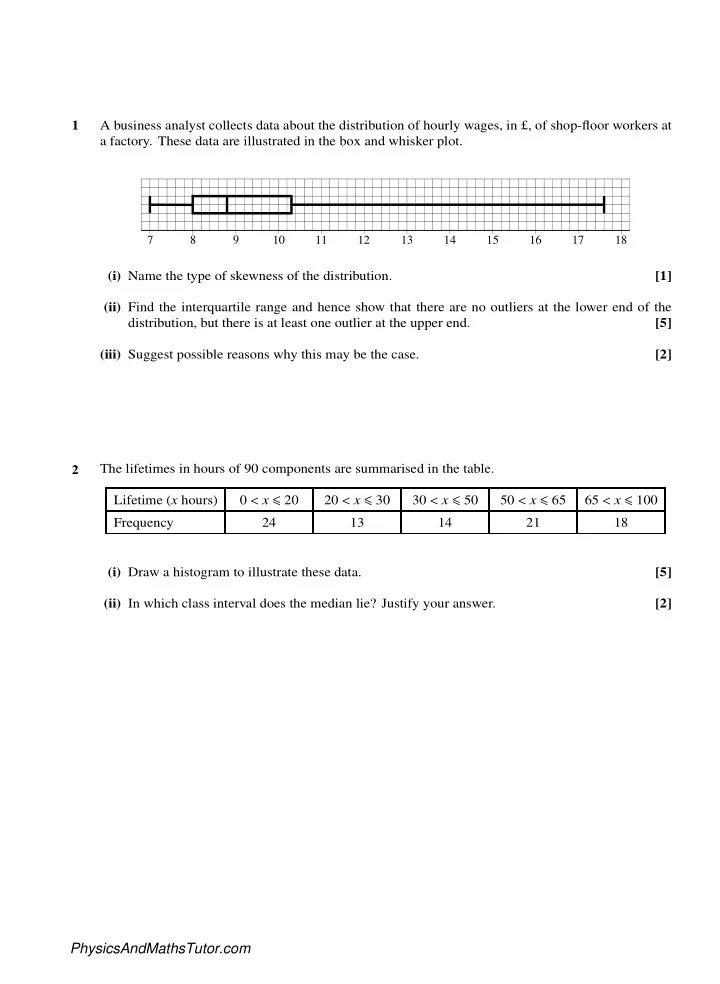

1 A business analyst collects data about the distribution of hourly wages, in £, of shop-floor workers at a factory. These data are illustrated in the box and whisker plot. 7 8 9 10 11 12 13 14 15 16 17 18 (i) Name the type of skewness of the distribution. [1] (ii) Find the interquartile range and hence show that there are no outliers at the lower end of the distribution, but there is at least one outlier at the upper end. [5] (iii) Suggest possible reasons why this may be the case. [2] 2 The lifetimes in hours of 90 components are summarised in the table. Lifetime ( x hours) 0 < x ≤ 20 20 < x ≤ 30 30 < x ≤ 50 50 < x ≤ 65 65 < x ≤ 100 Frequency 24 13 14 21 18 (i) Draw a histogram to illustrate these data. [5] (ii) In which class interval does the median lie? Justify your answer. [2] PhysicsAndMathsTutor.com
3 A pear grower collects a random sample of 120 pears from his orchard. The histogram below shows the lengths, in mm, of these pears. Frequency density 6 5 4 3 2 1 Length 0 90 0 60 70 80 100 (mm) (i) Calculate the number of pears which are between 90 and 100 mm long. [2] (ii) Calculate an estimate of the mean length of the pears. Explain why your answer is only an estimate. [4] (iii) Calculate an estimate of the standard deviation. [3] (iv) Use your answers to parts (ii) and (iii) to investigate whether there are any outliers. [4] (v) Name the type of skewness of the distribution. [1] (vi) Illustrate the data using a cumulative frequency diagram. [5] PhysicsAndMathsTutor.com
4 The frequency table below shows the distance travelled by 1200 visitors to a particular UK tourist destination in August 2008. Distance ( d miles) 0 ≤ d < 50 50 ≤ d < 100 100 ≤ d < 200 200 ≤ d < 400 Frequency 360 400 307 133 (i) Draw a histogram on graph paper to illustrate these data. [5] (ii) Calculate an estimate of the median distance. [3] PhysicsAndMathsTutor.com
Recommend
More recommend